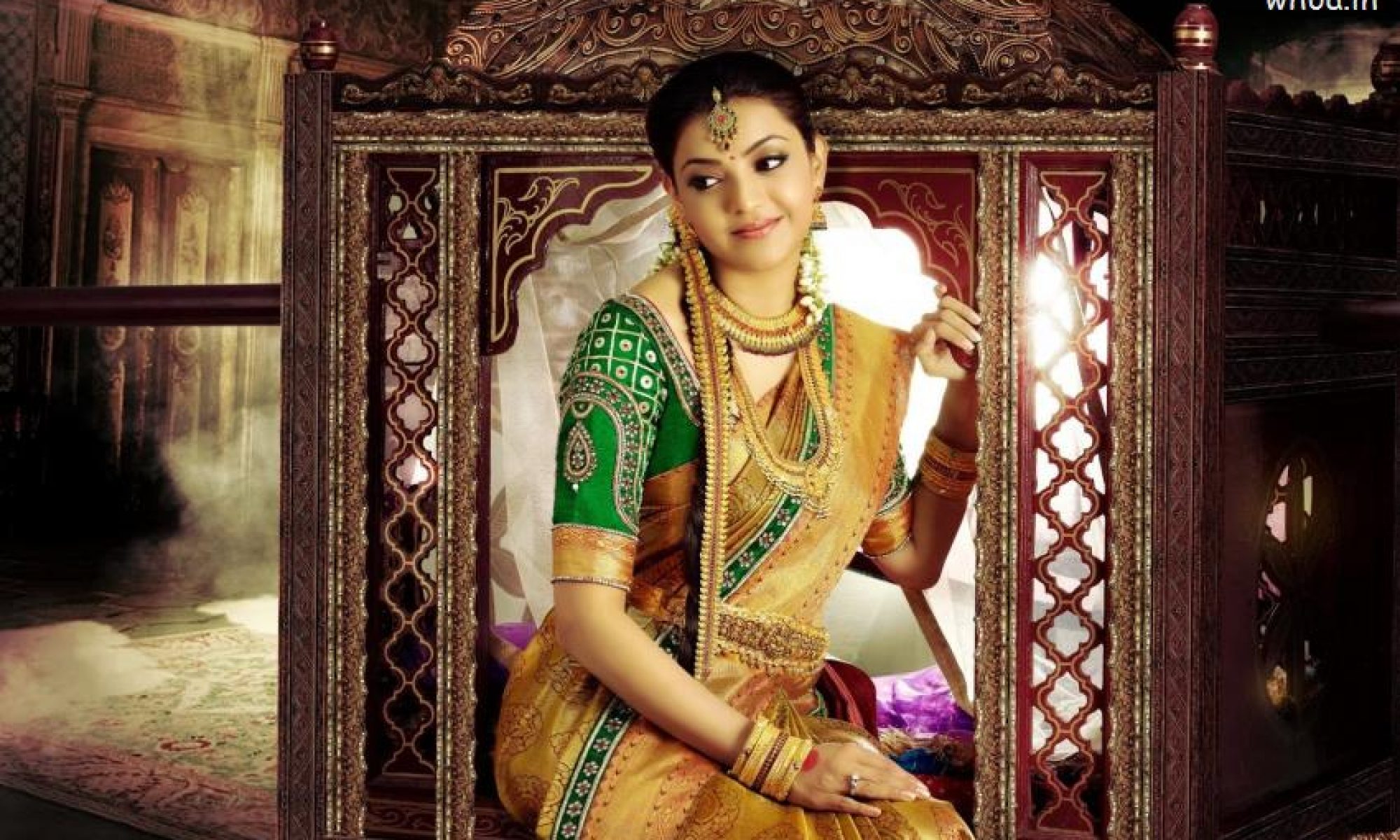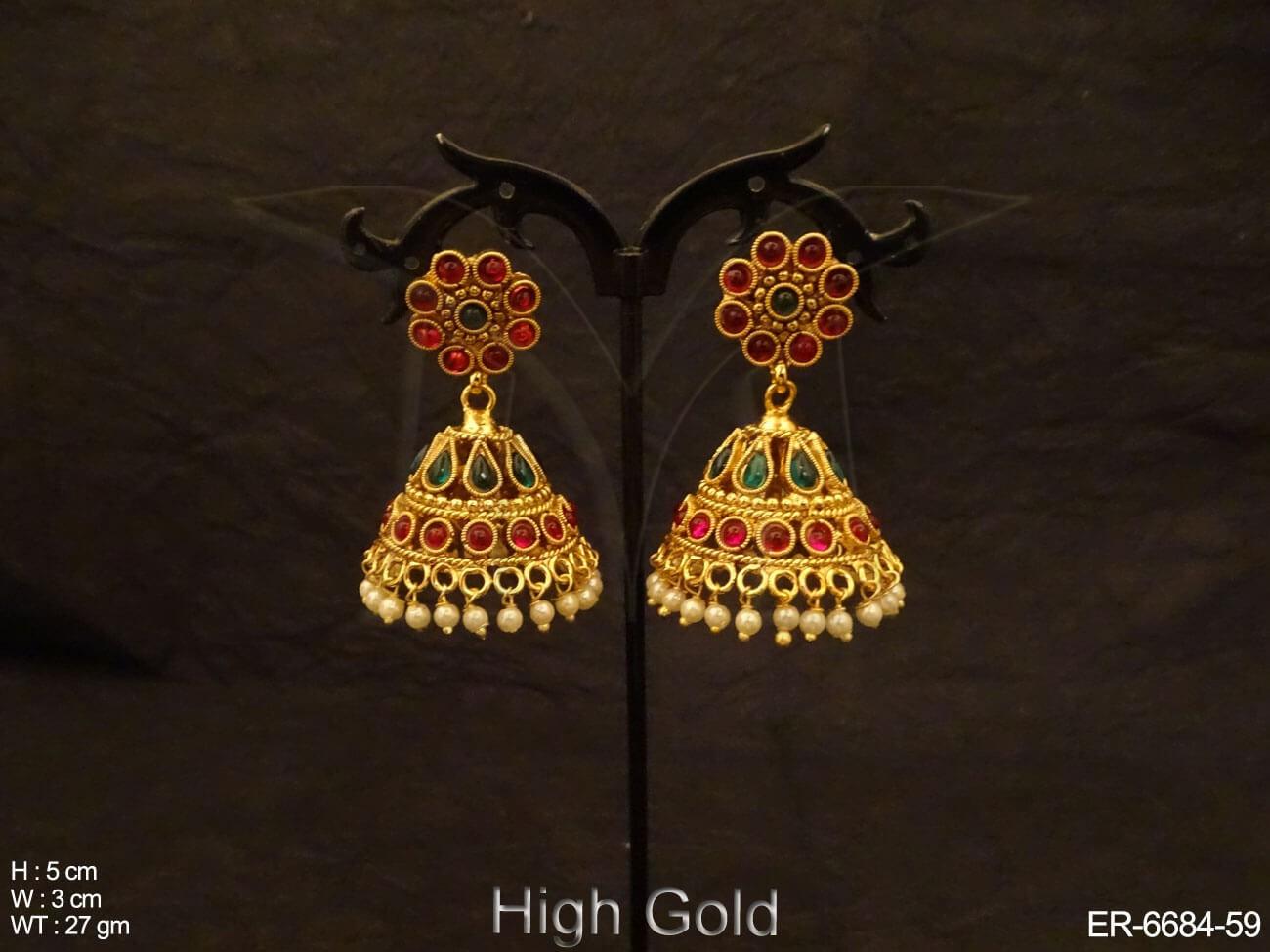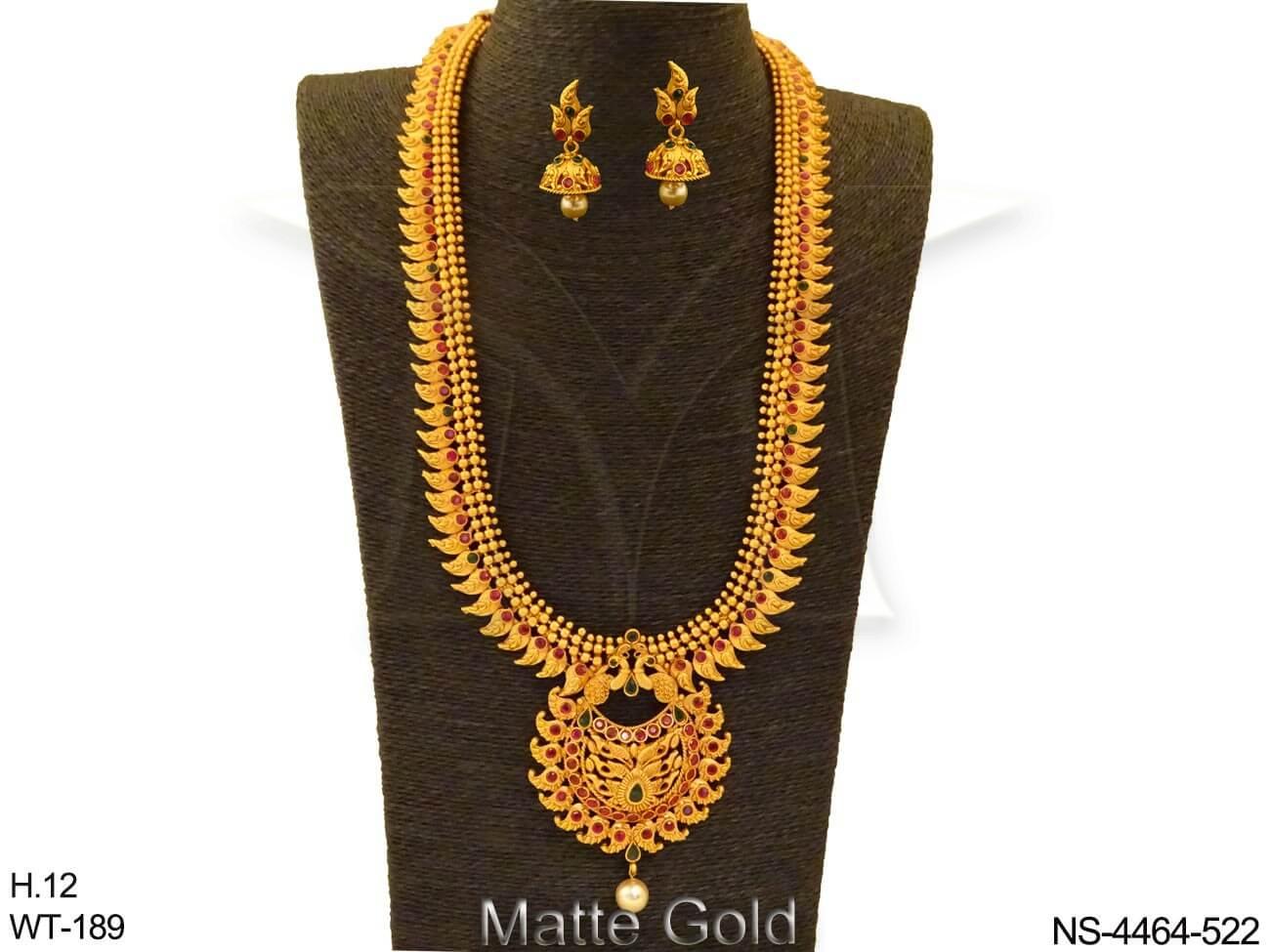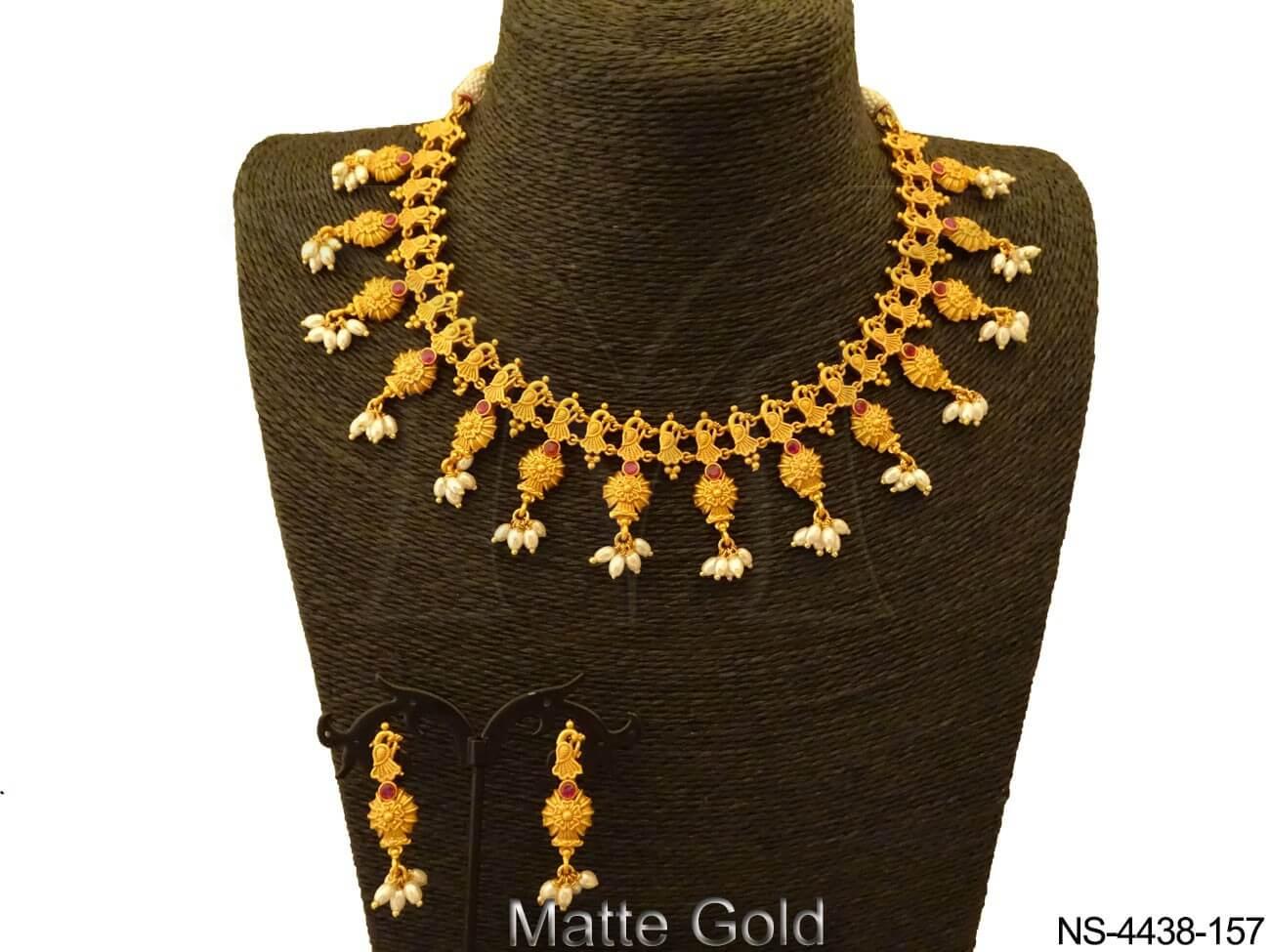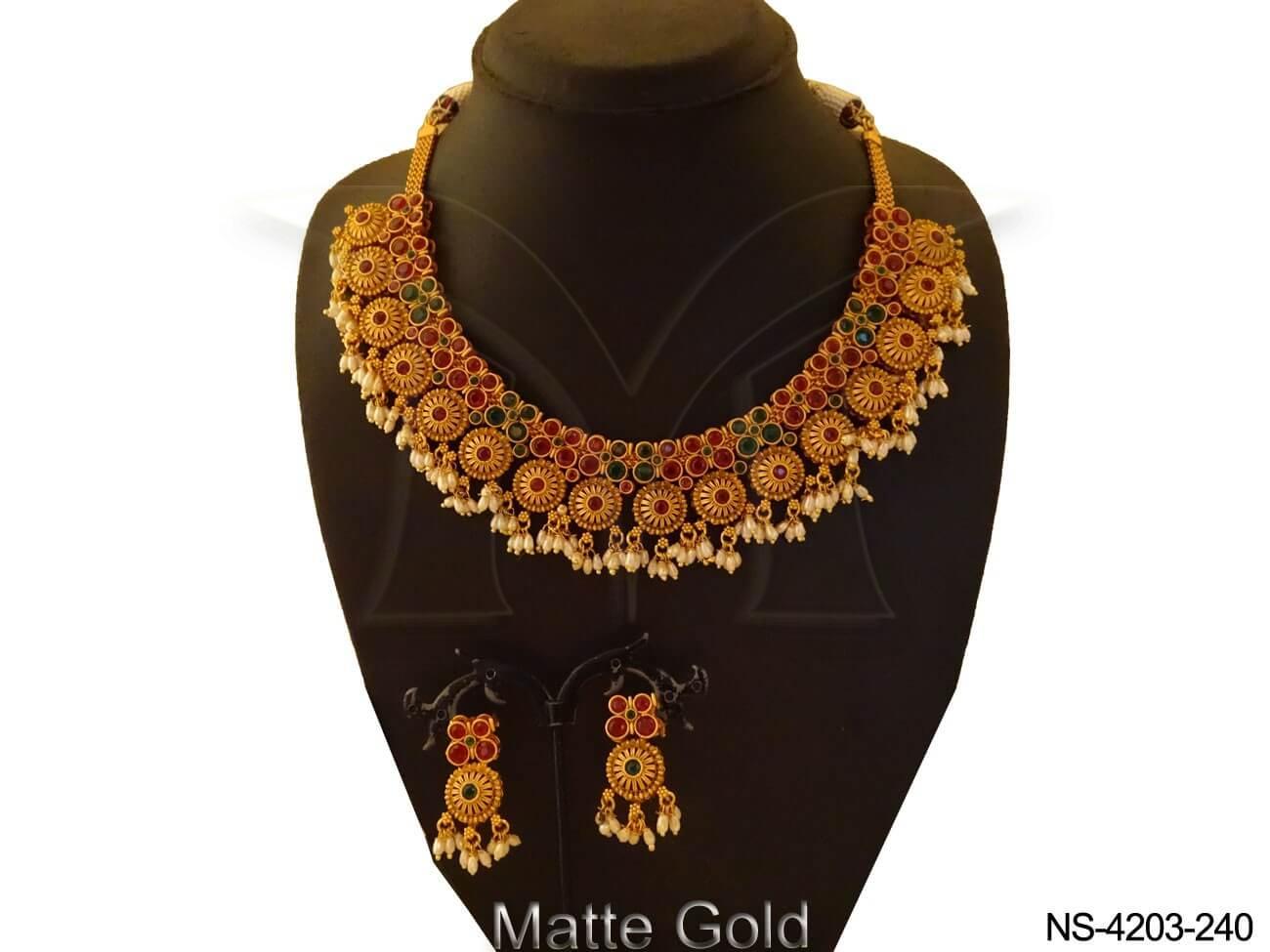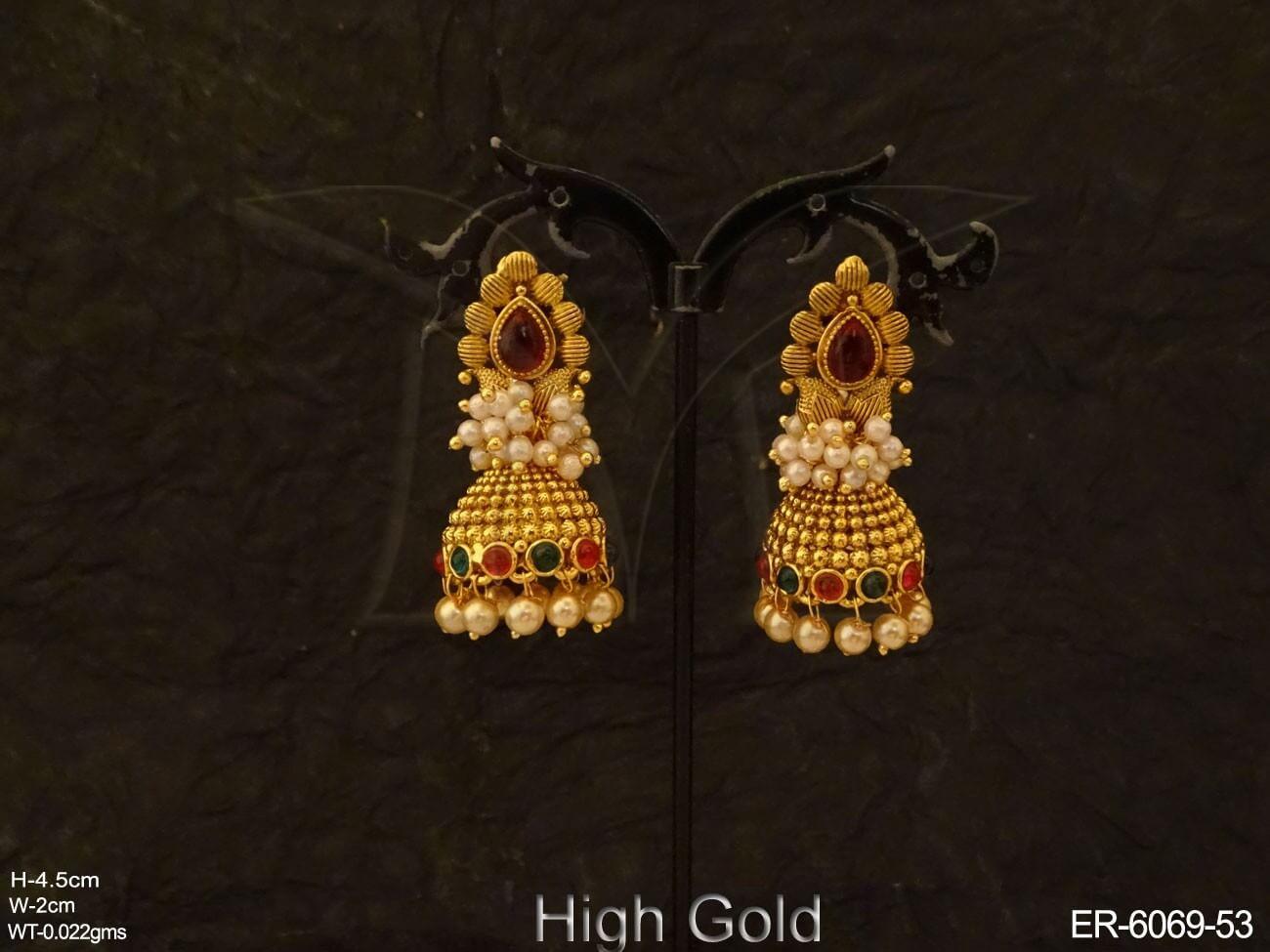Kemp Jhumki Earrings Jewellery
Kemp Jhumki Earrings Jewellery industry is much varied in styles and designs in accordance to the different regions. Kemp Jhumki Earrings Jewellery has the unique design to the state and are not found anywhere else in the world.
Kemp Jhumki Earrings Jewellery and Indian women are the terms always linked inherently. In India during wedding as well as numerous other occasions, a woman is gifted Earrings by her parents and relatives. Although such gifts are meant to give her security in contingency, ornamentation is an obvious purpose. All the cities across the length and width of India have outlets of jewellers were some are traditional and some are modern jewellers, catering to the need of all kinds of customers.
As time has gone people learnt the art of polishing metals like gold and silver and learnt to extract semi-precious stones and gems from the mines. Even during ruling empires the rich kings wore Earrings that made them look like Gods. Every big and small piece of adornment was made of gold and precious stones like rings, earrings, Indian Earrings, chains, crowns, anklets, etc. For past many years India has been ruled by different empires. All these empires have left an incredible mark on the Earrings styles. The Mughals had their own distinctive style of using precious stones and intricate carvings, the Rajputs had their enameled Earrings and so on.
